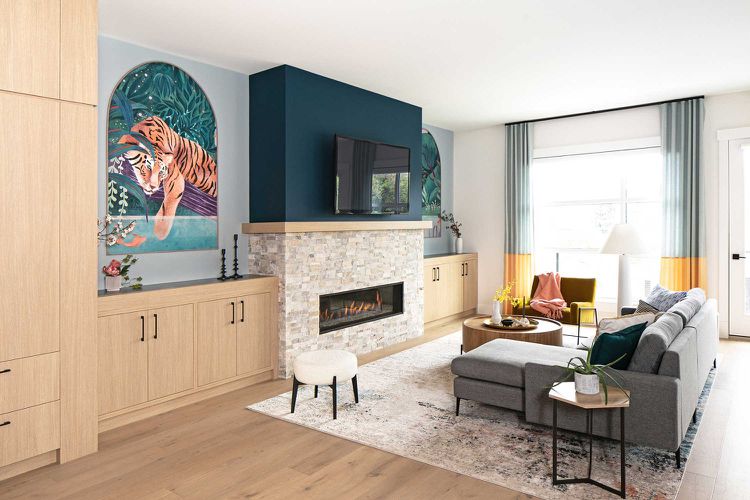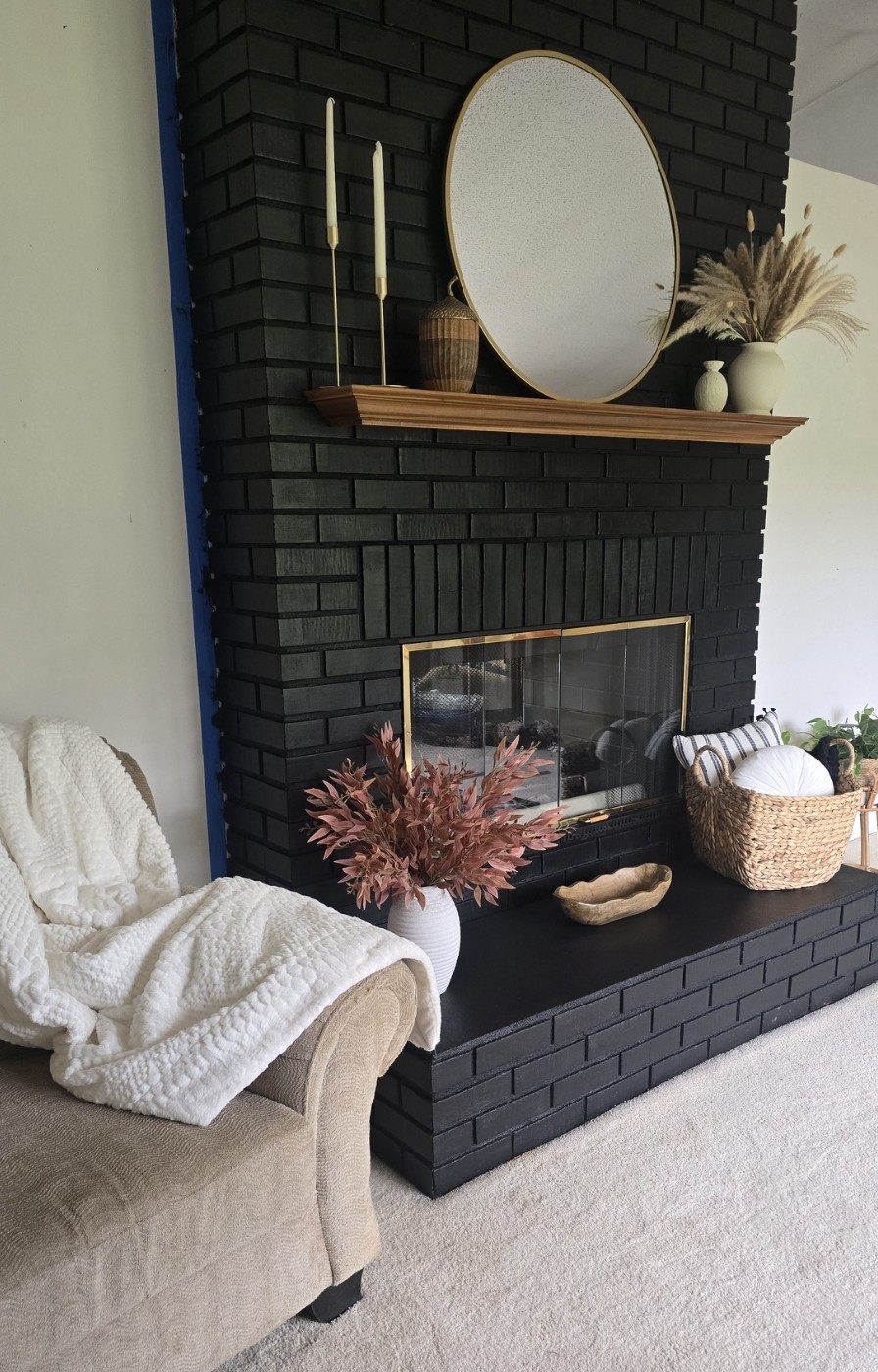Over the past couple of decades, gas fireplaces have become increasingly popular as they instantly elevate the ambience, warmth, and aesthetics indoors. A gas fireplace is definitely worth considering, especially if you want to do away with handling wood and starting fires.
However, gas fireplaces have their set of drawbacks that could turn out to be deal breakers. Therefore, weigh their advantages and disadvantages before committing to ensure an indoor gas fireplace is a good fit.
Well, with that said, let’s explore the pros and cons of indoor gas fireplaces.
Pros of Indoor Gas Fireplaces
In this section, we’ll discuss the many reasons why many homeowners choose gas fireplaces.
1. Energy Efficiency and Cost Effectiveness
Gas fireplaces heat homes more efficiently than wood-burning fireplaces, with their efficiency rating reaching up to 90%. Gas fireplaces convert most of the fuel to usable heat. Moreover, they generate sufficient heat with minimal fuel.
Also, gas fireplaces don’t need chimneys. Instead, most use direct venting, which provides sealed combustion, thus preventing heat loss and drafts.
Moreover, a gas fireplace is better than a central heating system when it comes to energy efficiency. This is because unlike central heating, which heats the whole house, including unoccupied rooms, a gas fireplace lets you focus heat in specific rooms, perhaps the bedroom or living room.
Installing a gas fireplace inside your house will lower the cost of heating your home and reduce your energy consumption.
Related Posts:
- Electric Fireplace Pros and Cons
- Wood Burning Fireplace Pros And Cons
- Modern Living Room Fireplace Ideas
- Indoor Gas Fireplace Ideas For Living Room
2. Ease of Use and Convenience
Are you tired of constantly chopping wood for your fireplace and cleaning up ashes? A gas fireplace could be the answer to your problems. Instantly light a gas fireplace with a button or switch. You also get remote control functionality with a gas fireplace, meaning you can control it from anywhere in the room.
In addition, a gas fireplace eliminates the need to constantly tend to the fire to keep it burning. For instance, you don’t have to stoke the flames or add logs. A gas fireplace will continue burning from when you light it up until you decide to turn it off.
3. Low Maintenance
Since gas fireplaces don’t produce ashes, sparks, creosote, or soot, keeping them clean is pretty straightforward. However, you must keep up with the annual inspections to ensure the gas line and the unit’s components are in good condition. Also, wipe down your gas fireplace occasionally to keep it clean.
4. Clean Burning
Gas fireplaces provide the fire’s ambience without the pollutants associated with wood-burning fireplaces. A gas fireplace won’t compromise the air quality inside your house because it doesn’t produce harmful particles of fumes.
Moreover, it emits significantly less carbon dioxide and minimal smoke.
5. Increased Safety
The absence of open flames, flying embers, or sparks that can cause fires makes gas fireplaces safer, especially for homes with young kids or pets. Gas fireplaces also don’t put you at risk of burns because they don’t have open flames.
Besides that, many gas fireplaces are equipped with built-in safety mechanisms that monitor the oxygen and flame levels. Your gas fireplace will automatically shut off if the sensors detect abnormalities, such as a dip in the oxygen levels or the flame suddenly goes out.
6. Placement Flexibility
Have you ever wanted to move your fireplace to a different location but can’t because of the chimney? Well, a gas fireplace will eliminate this problem. For example, you can install a ventless gas fireplace anywhere because it doesn’t need an external vent or chimney.
On the other hand, you can put a direct vent gas fireplace anywhere with an outside wall. A freestanding gas fireplace is portable and flexible, so you can move it around. It suits you most if you want to keep your home warm without installing a fireplace.
You can mount a gas fireplace on the wall, fit it into a corner, under windows, or even between rooms to create a two-sided and three-sided unit.
7. Versatility In Design
There’s a gas fireplace perfect for contemporary, rustic, and traditional homes, so there’s a unit that suits your house’s décor. You can pick materials, colors, and finishes for a customized look best suited to your indoor spaces.
Moreover, you can style the space around your gas fireplace with beautiful decorative pieces, creating a visually stunning space. Also, depending on the look you are going for, choose either a single-sided gas fireplace, a linear gas fireplace, or a double or three-sided gas fireplace.
8. Eco-Friendliness
Gas fireplaces are better for the environment because they don’t contribute to deforestation since they don’t burn wood. These fireplaces also burn more cleanly, producing fewer pollutants and emissions. Moreover, they are energy efficient, thus reducing your home’s carbon footprint.
Although gas fireplaces are more environmentally friendly than their wood-burning counterparts, they aren’t entirely green. This is because they use natural gas and propane, which are non-renewable.
9. Increased Home Value
An indoor gas fireplace can raise your home’s resale value. A potential buyer will likely opt for a house with a gas fireplace, especially in cold climates, rather than one without. Modern gas fireplaces can improve the aesthetics of homes, making them look luxurious and more attractive to discerning buyers.
The potential of selling your home at a much higher price makes adding a gas fireplace indoors a smart investment.
10. Year-Round Use
Traditional wood-burning fireplaces are limiting because they are typically used during cold seasons. Fortunately, the same isn’t true for gas fireplaces, as you can use yours throughout the year.
- Winter: A gas fireplace will come in handy during these cold months by keeping your home warm and ambient.
- Summer: If your gas fireplace has a flame-only option, you can enjoy a fire’s flicker and glow without heating the room in summer. Therefore, you can create a cozy ambient environment perfect for summer nights.
- Fall and Spring: Make the room less chilly without making it too hot during fall and spring’s cool evenings by setting your gas fireplace to moderate or low.
Read More:
Cons of Indoor Gas Fireplaces
An indoor gas fireplace has plenty to offer but isn’t flawless. So, before you make your final decision on whether to buy it or not, below are the drawbacks of indoor gas fireplaces.
a) Installation Costs
A gas fireplace unit is relatively affordable, but the initial cost of buying and installing it will significantly increase, especially if you require a gas line. The amount of money you’ll spend to run a gas line to your home will vary based on the distance between your house and the main gas supply and how complex the work is.
The overall expenses will also rise if you need to install a new venting system or modify an existing chimney. Moreover, installing any required electrical work to ensure the fireplace works costs money. You’ll also pay for labor, inspection, and permits.
Generally, it will cost you around $2500 to $10000 to install a gas fireplace.
b) Limited Heat Output
Gas fireplaces offer localized warmth, making them more suitable for heating specific areas or a single room. You cannot rely on them to warm your entire house, especially if your unit lacks enough BTU (British Thermal Unit) output.
c) The Heat Dissipates Quickly
While gas fireplaces provide heat instantly, thus warming up the space quickly, they rapidly lose the heat the moment you turn it off. Unlike wood-burning fireplaces that keep radiating heat even after the fire dies out, gas fireplaces stop emitting heat once combustion stops.
d) Less Authentic
A gas fireplace lacks the authentic charm, sensory experience, and ambience a wood-burning fireplace provides. Some people find the gentle popping and cracking sounds of burning wood enjoyable and its earthy aroma comforting.
Wood-burning fireplaces also engage multiple senses, including smell and sound, providing a richer experience. Also, you will not feel like you are sitting in front of a real fire due to the lack of real logs.
e) Dependence On Natural Gas
Yes, a gas fireplace is more energy-efficient and cost-effective, but running it can be expensive, especially in winter when heat is needed most. A steady supply of natural gas is required in order to run a gas fireplace.
An interruption in service will leave you without heat, particularly if you don’t have an alternative source of heat.
Also, natural gas isn’t available everywhere. While it is typically readily available in urban and suburban areas, the supply in rural areas might be limited or costly. In this case, you may have to use propane, which is more expensive than natural gas.
g) Regular Inspections Needed
Gas fireplaces need less upkeep than wood-burning fireplaces. However, you must inspect your gas fireplace annually to avoid any issues that could compromise your safety, such as wear or leaks on the gas line. Aside from the annual professional inspection, keep an eye on your gas fireplace in between.
Final Remarks
Whether an indoor gas fireplace suits you boils down to your preferences and needs. It is an excellent choice if you value efficiency, convenience, less cleaning, cost-effectiveness, and clean burning most. However, choose a wood-burning fireplace for that authentic crackling, wood-fueled fire.

Hi! I’m Susie, the creative mind behind Cozy Castle 101. I love sharing easy and simple ideas to make home and garden spaces cozy and inviting. From simple DIY projects and fun crafts to family-friendly recipes, I’m all about creating a warm, welcoming home where memories are made. Join me as I explore ways to add a bit of creativity and charm to everyday life!


